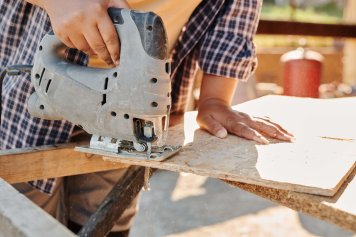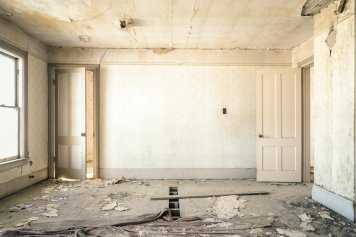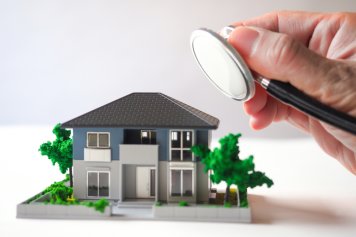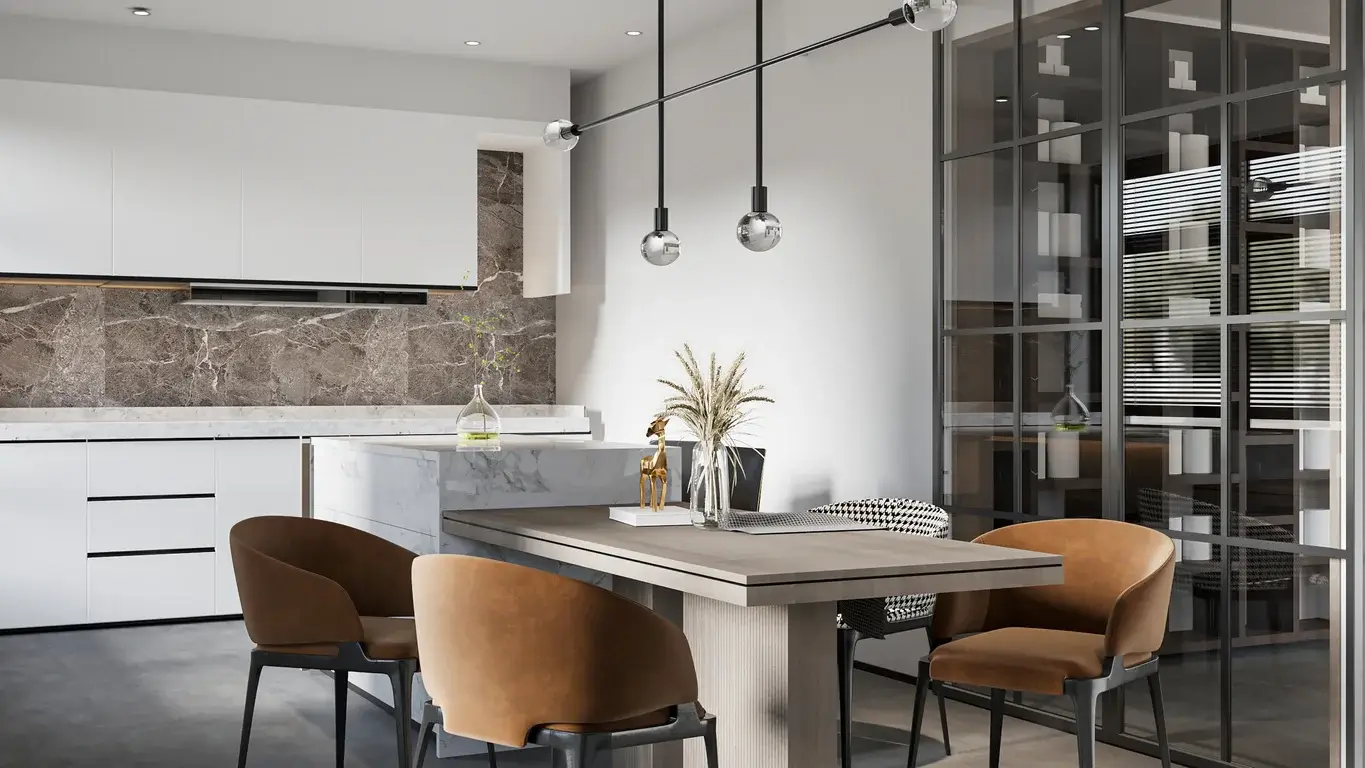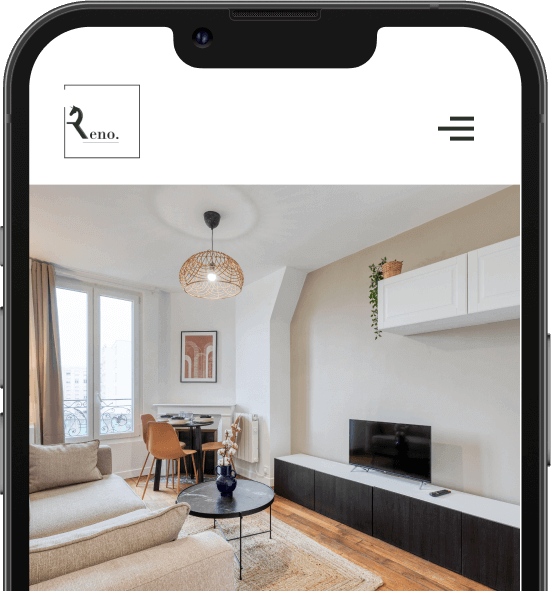La facture énergétique moyenne des ménages atteint désormais plus de 1800 euros par an. Ce montant représente une part importante des dépenses contraintes. Des économies sont nécessaires et possibles.
Le contexte énergétique en France évolue rapidement. Les prix du gaz naturel et de l’électricité augmentent sans cesse. Cette situation complique la gestion du budget familial.
Les consommations d’énergie peuvent être réduites par des gestes simples. L’optimisation du chauffage offre des résultats immédiats. Le choix d’appareils moins énergivores fait aussi la différence.
La rénovation énergétique constitue une solution durable et efficace. Reno, entreprise spécialisée en rénovation à Paris, accompagne cette transition. Leur expertise technique transforme les logements énergivores en habitats économes.
Les aides financières comme le chèque énergie allègent la facture. Des dispositifs nationaux soutiennent les travaux d’amélioration énergétique. Ces subventions rendent les projets plus accessibles.
La production d’eau chaude sanitaire représente un poste important de consommation. Des alternatives existent pour ce besoin quotidien. Les solutions modernes réduisent considérablement ce coût.
L’intégration d’énergies renouvelables offre une indépendance énergétique partielle. Les projets réalisés par Reno intègrent souvent cette dimension. Leur approche globale maximise les économies possibles.
Ce guide pratique vous propose des solutions adaptées à chaque situation. Des mesures simples aux rénovations complètes, toutes comptent. Votre facture énergétique peut diminuer significativement avec les bonnes décisions
Comment réduire sa facture d’électricité et de gaz au quotidien ?
La hausse des prix de l’énergie touche tous les foyers français. Vous pouvez agir facilement pour diminuer vos dépenses. Des solutions simples existent pour tous les budgets.
Les gestes simples pour diminuer la consommation énergétique
Vos habitudes quotidiennes influencent votre consommation d’énergie. Éteignez les lumières en quittant une pièce. Débranchez les appareils en veille. Ces actions réduisent votre facture d’électricité rapidement.
Les appareils énergivores pèsent lourd sur votre budget. Limitez l’usage de votre sèche-linge en hiver. Préférez l’étendage naturel quand c’est possible. Votre lave-linge consomme moins à basse température. Optez pour des cycles courts à 30°C pour votre linge peu sale.
Optimiser le chauffage pour réduire les dépenses énergétiques
La température idéale dans un logement se situe entre 19 et 20°C. Chaque degré en moins économise 7% sur votre facture annuelle. Baissez le chauffage la nuit ou en votre absence. Utilisez un thermostat programmable pour plus d’efficacité.
L’entretien régulier de vos équipements reste crucial. Faites réviser votre chaudière chaque année par un professionnel. Purgez vos radiateurs avant la saison froide. Ces gestes simples optimisent votre facture énergétique et prolongent la durée de vie de vos appareils.
Économies possibles selon les actions :
|
Action |
Économie annuelle moyenne |
|
Baisser la température de 1°C |
70€ |
|
Entretien de la chaudière |
100€ |
|
Débrancher les appareils en veille |
80€ |
|
Laver le linge à 30°C |
50€ |
|
Installer un thermostat programmable |
150€ |

Quelles aides financières pour alléger sa facture énergétique en France ?
De nombreux dispositifs existent pour vous aider à payer moins cher. L’État propose plusieurs solutions d’accompagnement. Ces aides s’adaptent à votre situation personnelle.
Le chèque énergie et les dispositifs d’aide aux ménages
Le chèque énergie aide les foyers modestes à payer leurs factures. Votre revenu fiscal détermine votre éligibilité. Le montant varie entre 48 et 277 euros selon votre situation. Vous recevez ce chèque automatiquement par courrier chaque année.
Les démarches restent très simples pour les bénéficiaires. Vous utilisez ce chèque directement chez votre fournisseur d’électricité et gaz. Vous pouvez aussi financer certains travaux de rénovation avec ce dispositif. Pensez également aux tarifs sociaux proposés par certains fournisseurs.
Les subventions pour la rénovation énergétique de votre logement
MaPrimeRénov’ constitue l’aide principale pour les propriétaires. Cette subvention finance vos travaux d’isolation ou de chauffage. Le montant dépend de vos revenus et des économies d’énergie réalisées. Vous faites votre demande directement sur le site officiel.
D’autres dispositifs complètent cette offre nationale. Les certificats d’économie d’énergie (CEE) réduisent le coût des travaux. Les collectivités territoriales proposent aussi des aides locales. Un prêt avance rénovation peut également financer votre projet sans alourdir votre budget mensuel.
Récapitulatif des principales aides financières :
|
Aide |
Montant moyen |
Public concerné |
|
Chèque énergie |
150€ |
Ménages modestes |
|
MaPrimeRénov’ |
2000 à 10000€ |
Tous propriétaires |
|
Éco-prêt à taux zéro |
Jusqu’à 50000€ |
Tous propriétaires |
|
Prime CEE |
Variable |
Tous ménages |
|
Aides locales |
500 à 2000€ |
Selon territoires |
La rénovation énergétique : solution durable pour réduire sa consommation d’énergie
Les travaux de rénovation offrent des économies à long terme. Votre investissement initial se rentabilise rapidement. Vous améliorez aussi votre confort quotidien.
Pourquoi investir dans une rénovation énergétique avec Reno ?
Une bonne rénovation permet un retour sur investissement rapide. Vous économisez entre 30% et 60% sur votre consommation énergétique annuelle. Ces économies compensent progressivement votre investissement initial. Votre facture diminue dès la première année après les travaux.
La valeur de votre bien immobilier augmente considérablement. Un logement bien isolé se vend plus cher sur le marché. Vous gagnez en moyenne 15% de valeur après une rénovation complète. L’étiquette énergétique devient un critère décisif pour les acheteurs aujourd’hui.
Les travaux prioritaires pour améliorer l’efficacité énergétique
L’isolation thermique représente le poste le plus important. Commencez par isoler votre toit qui génère 30% des pertes de chaleur. Puis traitez vos murs et vos fenêtres pour un résultat optimal. Ces travaux réduisent considérablement votre besoin en chauffage.
Le remplacement des systèmes de chauffage vétustes s’avère très rentable. Une pompe à chaleur consomme trois fois moins qu’une chaudière classique. Une chaudière à condensation offre 25% d’économies immédiates. Reno propose des devis travaux personnalisés pour chaque projet de rénovation énergétique.
L’expertise technique de Reno pour vos projets de rénovation
L’approche personnalisée garantit des résultats optimaux pour chaque logement. Un diagnostic complet précède chaque intervention. Les spécialistes analysent votre consommation actuelle et vos besoins. Vous recevez des recommandations adaptées à votre budget.
Les économies réalisées grâce à une rénovation professionnelle dépassent souvent les prévisions. Une maison rénovée par des experts consomme jusqu’à 70% d’énergie en moins. L’entreprise spécialisée en rénovation utilise des matériaux performants et durables. Votre confort augmente tandis que votre facture diminue drastiquement.

Comment choisir des équipements moins énergivores pour son logement ?
Le choix d’appareils économes impacte directement votre budget. Des équipements performants réduisent votre consommation. Vous ferez des économies significatives à long terme.
Les critères de choix pour des appareils électroménagers économes
Les étiquettes énergétiques guident votre sélection d’appareils. Privilégiez les classes A ou B pour votre électroménager. Ces appareils consomment jusqu’à 30% d’électricité en moins. Leur impact sur votre facture annuelle devient vite visible.
Le coût global intègre l’achat et la consommation future. Un réfrigérateur classe A coûte plus cher à l’achat. Mais il économise environ 50 euros par an sur votre facture d’électricité. Cette différence amortit rapidement le surcoût initial. Pensez donc à comparer les prix de rénovation avec les économies futures.
Les systèmes de production d’eau chaude sanitaire économiques
Différentes technologies existent pour chauffer votre eau. Le chauffe-eau thermodynamique réduit de 70% la consommation électrique. La pompe à chaleur offre aussi d’excellentes performances. Ces solutions modernes s’adaptent à tous les logements.
Les économies potentielles varient selon votre situation actuelle. Un chauffe-eau solaire économise jusqu’à 300 euros par an. Un système thermodynamique réduit votre facture de 200 euros annuellement. La production d’eau chaude sanitaire représente 12% de votre consommation d’énergie totale.
Comparaison des systèmes de production d’eau chaude :
|
Système |
Économie annuelle |
Coût d’installation |
Durée de vie |
|
Chauffe-eau thermodynamique |
200€ |
2500€ |
15 ans |
|
Chauffe-eau solaire |
300€ |
4000€ |
20 ans |
|
Chauffe-eau à gaz naturel |
100€ |
1200€ |
12 ans |
|
Ballon électrique nouvelle génération |
70€ |
800€ |
10 ans |
Vers une production d’énergie renouvelable pour réduire sa dépendance énergétique
L’autoproduction représente l’avenir de la consommation énergétique. Vous devenez acteur de votre propre énergie. Cette autonomie protège contre la hausse des prix de l’énergie.
Les solutions d’autoconsommation adaptées aux logements
Les panneaux solaires constituent la solution la plus répandue. Une installation standard produit 3000 kWh par an. Cette production couvre 30% des besoins d’une famille moyenne. L’installation se rentabilise en sept à dix ans maintenant.
D’autres sources d’énergie renouvelable complètent l’offre solaire. Les éoliennes domestiques conviennent aux zones venteuses. Les pompes à chaleur captent l’énergie naturelle du sol. Ces technologies sont éligibles à la défiscalisation travaux pour alléger votre investissement initial.
Comment Reno intègre les énergies renouvelables dans ses projets
L’expertise de Reno s’étend aux solutions renouvelables modernes. L’entreprise évalue le potentiel énergétique de votre logement. Elle propose des installations sur mesure. Son approche globale optimise chaque projet.
Des réalisations récentes illustrent cette compétence technique. Une maison à Nanterre produit désormais 40% de son électricité. Un immeuble parisien a réduit sa facture énergétique de 60%. Ces rénovations d’appartement intègrent systématiquement la dimension renouvelable quand c’est possible.
Témoignages : réussites de rénovations énergétiques avec Reno
Des clients témoignent des résultats concrets obtenus. Leurs factures ont significativement diminué. Leur confort a nettement augmenté après travaux.
Des factures énergétiques divisées par deux grâce à l’expertise de Reno
Un appartement parisien de 85m² a transformé sa consommation. Le propriétaire payait 2300 euros par an d’électricité et gaz. Sa facture atteint maintenant 1100 euros annuels. L’isolation des murs et le changement des fenêtres ont fait la différence.
Une maison en banlieue consomme désormais 60% moins d’énergie. Cette famille dépensait 2800 euros annuels en chauffage. Leur devis rénovation toiture a inclus une isolation performante. Leur facture énergétique ne dépasse plus 1200 euros aujourd’hui.

La rénovation énergétique : solution durable pour réduire sa consommation d’énergie
Le marché de l’énergie traverse une période difficile en France. Les prix montent sans cesse. Vous cherchez des solutions pérennes pour votre logement.
L’importance de la rénovation dans le contexte énergétique actuel
Le bilan énergétique de la France montre une forte dépendance. Notre pays importe beaucoup de produits pétroliers chaque année. Cette situation pèse sur la facture énergétique nationale. Les ménages subissent directement cette pression économique.
La consommation d’énergie dans l’habitat représente un enjeu majeur. Le chauffage consomme plus de 60% de l’énergie d’un logement. L’isolation défectueuse aggrave ce problème considérablement. De nombreuses maisons françaises perdent leur chaleur inutilement.
Le secteur du bâtiment génère aussi des émissions importantes. Il contribue largement aux dépenses territoriales en énergie. Des solutions existent désormais pour ce défi. La rénovation énergétique répond efficacement à ces problématiques.
Les bénéfices économiques d’une rénovation énergétique complète
Votre facture d’électricité diminue fortement après travaux d’isolation. Une maison bien rénovée consomme jusqu’à 70% d’énergie en moins. Ces économies se traduisent par des milliers d’euros sur dix ans. Votre pouvoir d’achat s’améliore donc progressivement.
La hausse des prix des énergies renforce cette rentabilité. L’électricité et le gaz naturel deviennent plus coûteux. Une maison économe vous protège contre ces augmentations futures. L’investissement initial se rentabilise donc plus rapidement désormais.
La valeur immobilière de votre bien augmente également. Les acheteurs recherchent des logements peu énergivores aujourd’hui. Un bien classé A ou B se vend plus cher sur le marché. Cette plus-value couvre souvent une partie des travaux réalisés.
Les retours sur investissement selon les types de travaux
L’isolation des combles offre le retour le plus rapide. Cet investissement se récupère en trois à cinq ans seulement. La chaleur monte naturellement dans une habitation. Un toit mal isolé perd jusqu’à 30% de votre chauffage.
Le remplacement des fenêtres améliore aussi votre confort thermique. Les anciennes menuiseries laissent passer les courants d’air froid. Les modèles récents conservent mieux la chaleur intérieure. Ils réduisent également les nuisances sonores extérieures.
L’isolation des murs extérieurs complète efficacement ces premières actions. Cette intervention plus lourde demande un budget conséquent. Mais elle transforme radicalement les performances du bâtiment. Votre facture annuelle baisse considérablement après ces travaux.
Les aides spécifiques pour la rénovation énergétique en copropriété
Les immeubles collectifs bénéficient d’aides adaptées. La rénovation énergétique en copropriété mobilise des fonds spécifiques. Ces dispositifs facilitent les décisions communes. Ils permettent de réaliser des économies d’échelle importantes.
Les travaux collectifs améliorent l’ensemble du bâtiment. Ils optimisent les systèmes de production de chaleur communs. Les réseaux de distribution gagnent en efficacité. Tous les appartements profitent de ces améliorations techniques.
Les subventions couvrent une part significative des coûts. Elles réduisent la charge financière pour chaque propriétaire. Le retour sur investissement devient plus rapide. La valeur de tous les logements augmente simultanément.
Les aspects techniques d’une rénovation énergétique réussie
Le diagnostic énergétique constitue la première étape indispensable. Des professionnels analysent votre consommation actuelle. Ils identifient les points faibles de votre habitat. Ce bilan oriente efficacement vos futurs travaux.
Les matériaux isolants ont considérablement évolué récemment. Leurs performances thermiques s’améliorent constamment. Les solutions écologiques se développent rapidement. Vous disposez maintenant d’options durables et efficaces.
Les équipements de chauffage modernes consomment beaucoup moins. Une chaudière à condensation économise 25% d’énergie. Une pompe à chaleur réduit votre facture de 60%. Ces technologies rentabilisent votre investissement rapidement.
L’importance du choix des artisans pour vos travaux
La qualité d’exécution détermine l’efficacité finale. Les professionnels certifiés garantissent un travail conforme. Ils respectent les normes techniques en vigueur. Leur expertise assure la pérennité de vos installations.
Les garanties décennales protègent votre investissement longtemps. Elles couvrent les éventuels désordres après travaux. Cette sécurité justifie le recours à des entreprises reconnues. Votre tranquillité vaut largement cet engagement supplémentaire.
Le suivi de chantier requiert une coordination précise. Un interlocuteur unique simplifie vos démarches. Il supervise les différents corps de métier. Cette organisation optimise les délais d’intervention.
Les nouvelles technologies au service de l’efficacité énergétique
La domotique améliore la gestion quotidienne de l’énergie. Des capteurs régulent automatiquement votre chauffage. Ils adaptent la température selon vos habitudes. Ces systèmes intelligents évitent les gaspillages coûteux.
Les compteurs connectés analysent votre consommation en temps réel. Ils détectent les appareils énergivores dans votre logement. Ils vous alertent en cas de consommation anormale. Ces informations vous aident à modifier vos comportements.
L’intégration des énergies renouvelables complète votre rénovation. Les panneaux solaires produisent une électricité locale. Les pompes à chaleur captent l’énergie naturelle. Ces solutions réduisent votre dépendance énergétique durablement.
L’accompagnement professionnel : clé d’une rénovation réussie
Les entreprises spécialisées en rénovation apportent une expertise globale. Leurs architectes conçoivent des projets personnalisés. Leurs techniciens maîtrisent les dernières normes. Leur vision d’ensemble optimise chaque intervention.
Les économies réalisées justifient cet accompagnement professionnel. Une approche globale évite les erreurs coûteuses. Elle prévoit l’évolution future de vos besoins. Elle anticipe les nouvelles réglementations thermiques.
Le prix des travaux varie selon l’ampleur de votre projet. Une rénovation complète coûte entre 300 et 600 euros par mètre carré. Ce budget inclut matériaux et main-d’œuvre qualifiée. L’investissement se rentabilise généralement en moins de dix ans.
Des projets personnalisés selon vos contraintes
Votre budget détermine l’étendue des travaux possibles. Des rénovations partielles restent accessibles à tous. Elles ciblent les postes les plus énergivores. Elles apportent déjà des améliorations significatives.
Le phasage des interventions étale vos dépenses dans le temps. Vous commencez par les actions les plus rentables. Puis vous complétez progressivement votre rénovation. Cette approche respecte vos capacités financières.
Les contraintes architecturales nécessitent des solutions adaptées. Les bâtiments anciens demandent des techniques spécifiques. Les façades classées exigent des interventions discrètes. Ces particularités influencent le choix des matériaux.
L’importance du suivi post-travaux
La maintenance régulière prolonge l’efficacité des installations. Un entretien annuel optimise vos équipements de chauffage. Il prévient les pannes coûteuses. Il maintient les performances énergétiques initiales.
Le suivi de consommation valide l’efficacité des travaux réalisés. Des relevés réguliers quantifient vos économies réelles. Ils confirment le retour sur investissement attendu. Ils détectent d’éventuelles anomalies rapidement.
L’adaptation des comportements maximise les bénéfices obtenus. Les occupants apprennent à utiliser efficacement leur logement rénové. Ils optimisent la programmation du chauffage. Ils profitent pleinement des améliorations apportées.
Les perspectives d’avenir pour la rénovation énergétique en France
Les objectifs nationaux visent la neutralité carbone. La France doit rénover massivement son parc immobilier. Des millions de logements attendent une amélioration thermique. Ce défi représente aussi des opportunités économiques considérables.
Le secteur de la rénovation crée de nombreux emplois locaux. Ces métiers techniques ne peuvent pas être délocalisés. Ils offrent des perspectives professionnelles durables. Ils contribuent au dynamisme économique territorial.
Les innovations technologiques améliorent constamment les solutions. Les matériaux deviennent plus performants et écologiques. Les équipements gagnent en efficacité énergétique. Ces progrès rendent la rénovation toujours plus pertinente.
La facture énergétique de la France diminuera grâce à ces efforts. Notre dépendance aux importations de pétrole et gaz naturel s’atténuera. La balance commerciale du pays s’améliorera sensiblement. Notre économie gagnera en résilience face aux crises.
L’impact des nouvelles normes sur la consommation d’énergie
Les réglementations thermiques évoluent régulièrement en France. La RE2020 impose des standards plus exigeants. Ces normes concernent les constructions neuves et rénovations. Elles visent une réduction drastique des consommations énergétiques.
Le diagnostic de performance énergétique devient plus strict. Ce document influence fortement le marché immobilier. Les logements énergivores perdent de leur valeur. Les propriétaires doivent agir pour maintenir leur patrimoine.
Le SDES (Service des Données et Études Statistiques) publie régulièrement des analyses. Ces données montrent l’évolution de notre consommation nationale. Les ménages français dépensent des milliards d’euros en énergie. Cette charge pèse lourdement sur leur pouvoir d’achat.
La transition vers un mix énergétique plus équilibré
La diversification des sources d’énergie réduit notre vulnérabilité. Le gaz naturel reste une énergie de transition importante. L’électricité d’origine renouvelable se développe rapidement. Cette évolution transforme notre rapport à l’énergie.
La chaleur distribuée par réseau gagne du terrain. Ces infrastructures collectives optimisent la production thermique. Elles intègrent progressivement des énergies renouvelables. Leur rendement dépasse celui des solutions individuelles.
Les fournisseurs d’énergie proposent désormais des offres innovantes. Les tarifs s’adaptent aux heures de consommation. Les contrats encouragent l’autoconsommation d’électricité. Ces nouvelles approches modifient nos habitudes énergétiques.
L’impact environnemental de nos choix énergétiques
La répartition de la facture énergétique reflète nos priorités collectives. Les produits pétroliers dominent encore notre consommation. Leur impact environnemental devient problématique. La transition énergétique vise à réduire cette dépendance.
Le secteur industriel transforme ses processus de production. Il adopte des technologies moins énergivores. Il valorise davantage la chaleur fatale. Ces efforts réduisent progressivement sa consommation totale.
La mobilité représente un poste majeur de dépense énergétique. L’électrification des transports modifie ce secteur. Elle diminue notre dépendance aux carburants fossiles. Elle contribue à l’équilibre de notre facture énergétique territoriale.
Facture énergétique : les points essentiels
Réduire sa facture énergétique devient une priorité pour tous. Plusieurs solutions existent selon votre budget. Des gestes simples aux travaux ambitieux, chaque action compte.
Les comportements quotidiens génèrent des économies immédiates. L’optimisation du chauffage réduit considérablement vos dépenses. Le choix d’appareils performants complète cette démarche d’économie.
Les aides financières rendent les travaux plus accessibles. Le chèque énergie soutient les ménages modestes. Les subventions pour rénovation allègent les investissements importants.
La rénovation énergétique offre la solution la plus complète. Elle transforme durablement votre logement. Votre facture diminue tandis que votre confort augmente.
Reno accompagne votre projet de rénovation énergétique globale. Leur expertise technique garantit des résultats optimaux. Leur approche personnalisée s’adapte à votre budget et vos besoins.
N’attendez plus pour agir contre la hausse des prix de l’énergie. Chaque euro économisé compte dans votre budget. Un logement économe reste un investissement rentable pour l’avenir.
FAQ
Quelle est la facture énergétique moyenne d’un ménage en France ?
La facture énergétique des ménages atteint 1800 euros par an en moyenne. Ce montant varie selon la taille du logement. Le chauffage représente 60% de cette dépense annuelle. L’électricité et le gaz naturel constituent les principales sources d’énergie consommées.
Comment expliquer la hausse des prix de l’énergie ces dernières années ?
La hausse du prix de l’énergie résulte de plusieurs facteurs combinés. Les tensions géopolitiques perturbent l’approvisionnement en gaz naturel. La transition énergétique nécessite des investissements coûteux. Les taxes sur l’énergie augmentent également progressivement. Cette situation impacte directement la facture énergétique de la France.
Quels sont les travaux de rénovation les plus rentables pour économiser l’énergie ?
L’isolation du toit offre le meilleur retour sur investissement. Le remplacement d’une chaudière vétuste économise beaucoup d’énergie. L’installation de fenêtres double vitrage complète efficacement ces actions. Ces travaux réduisent vos consommations d’énergie jusqu’à 50%.
En combien de temps peut-on amortir une rénovation énergétique ?
L’amortissement d’une rénovation énergétique prend généralement entre 5 et 15 ans. Les économies réalisées remboursent progressivement votre investissement. Les aides financières accélèrent ce processus d’amortissement. La valeur ajoutée à votre bien immobilier représente un bénéfice supplémentaire immédiat.


